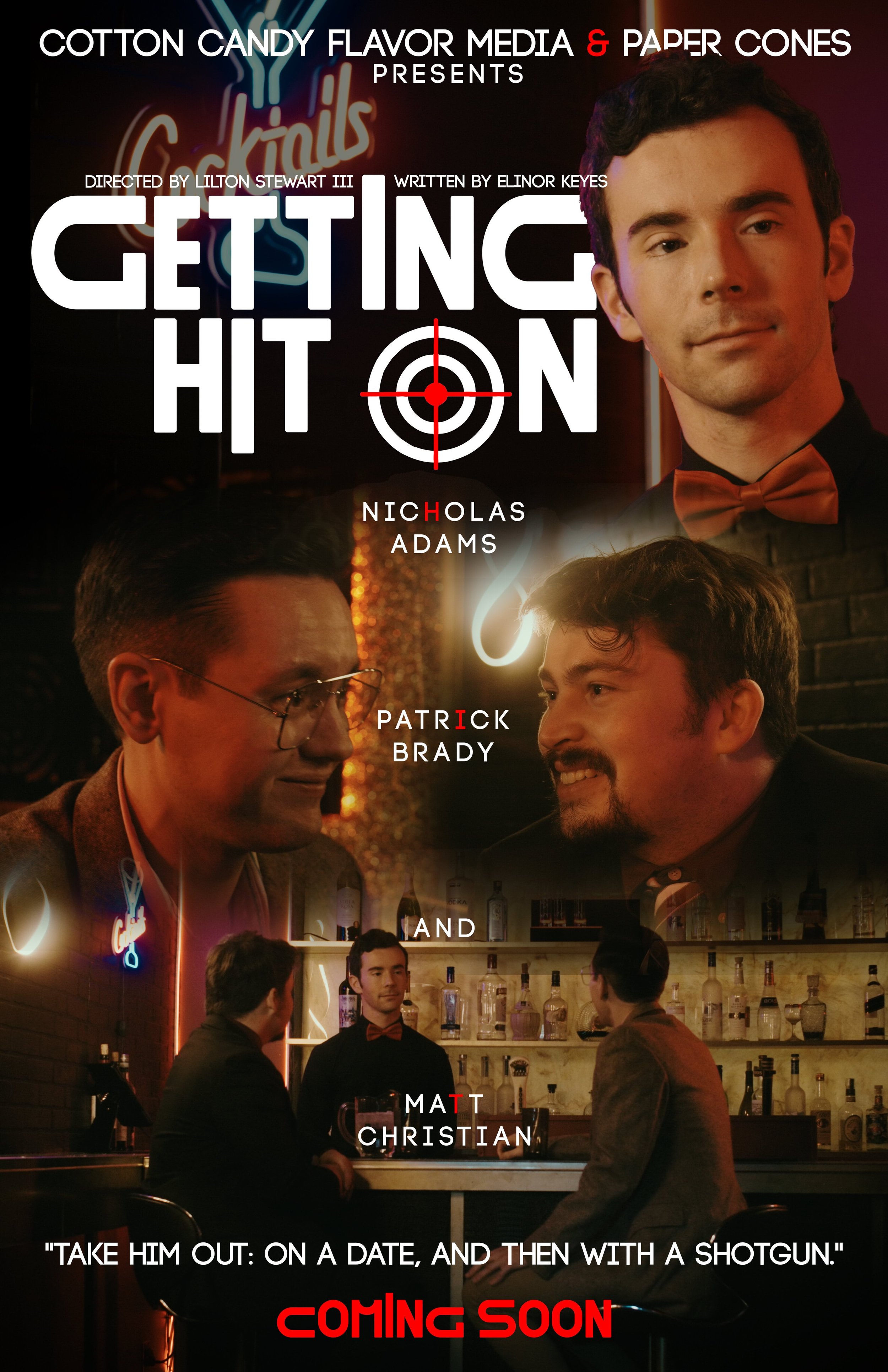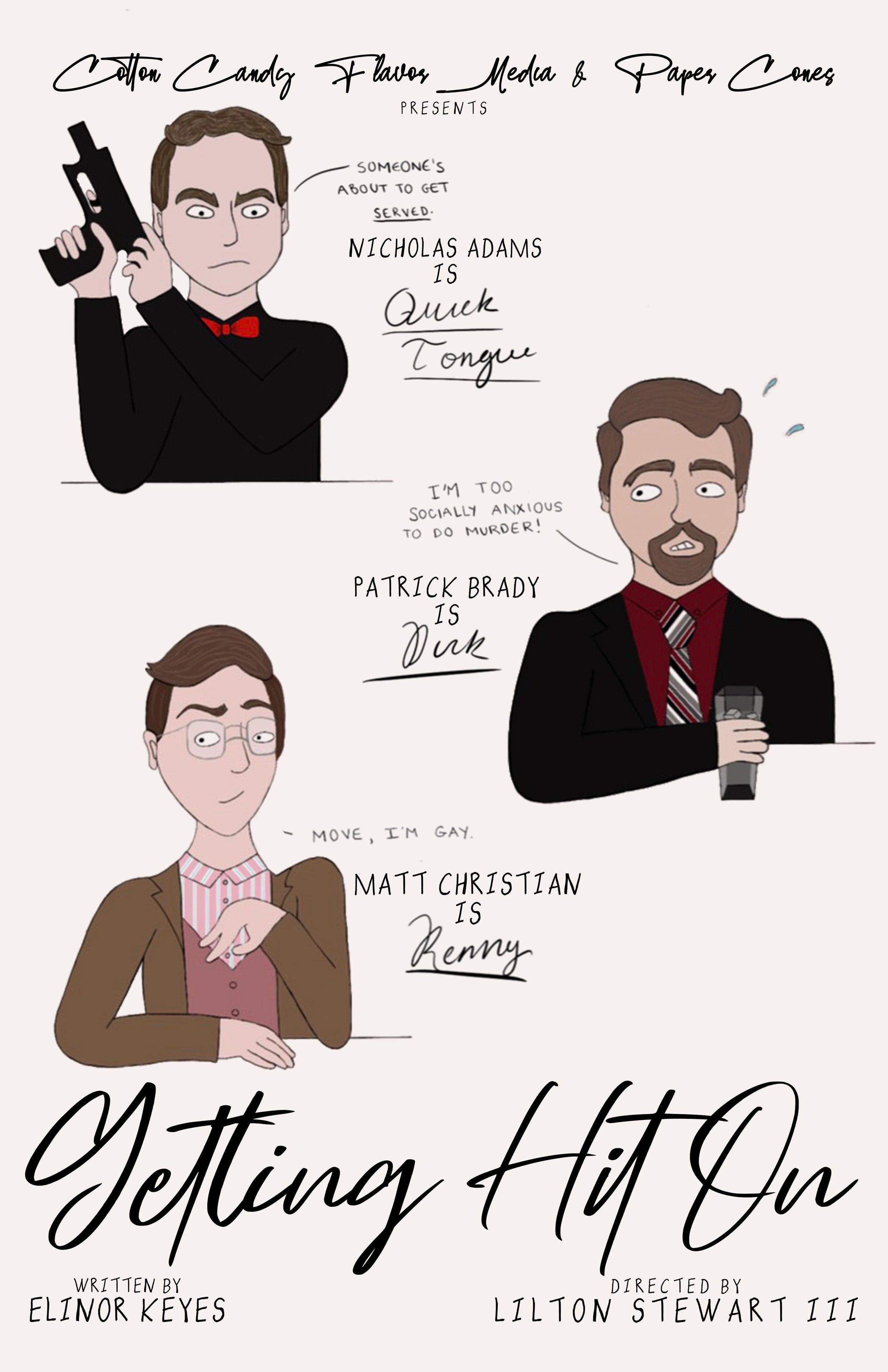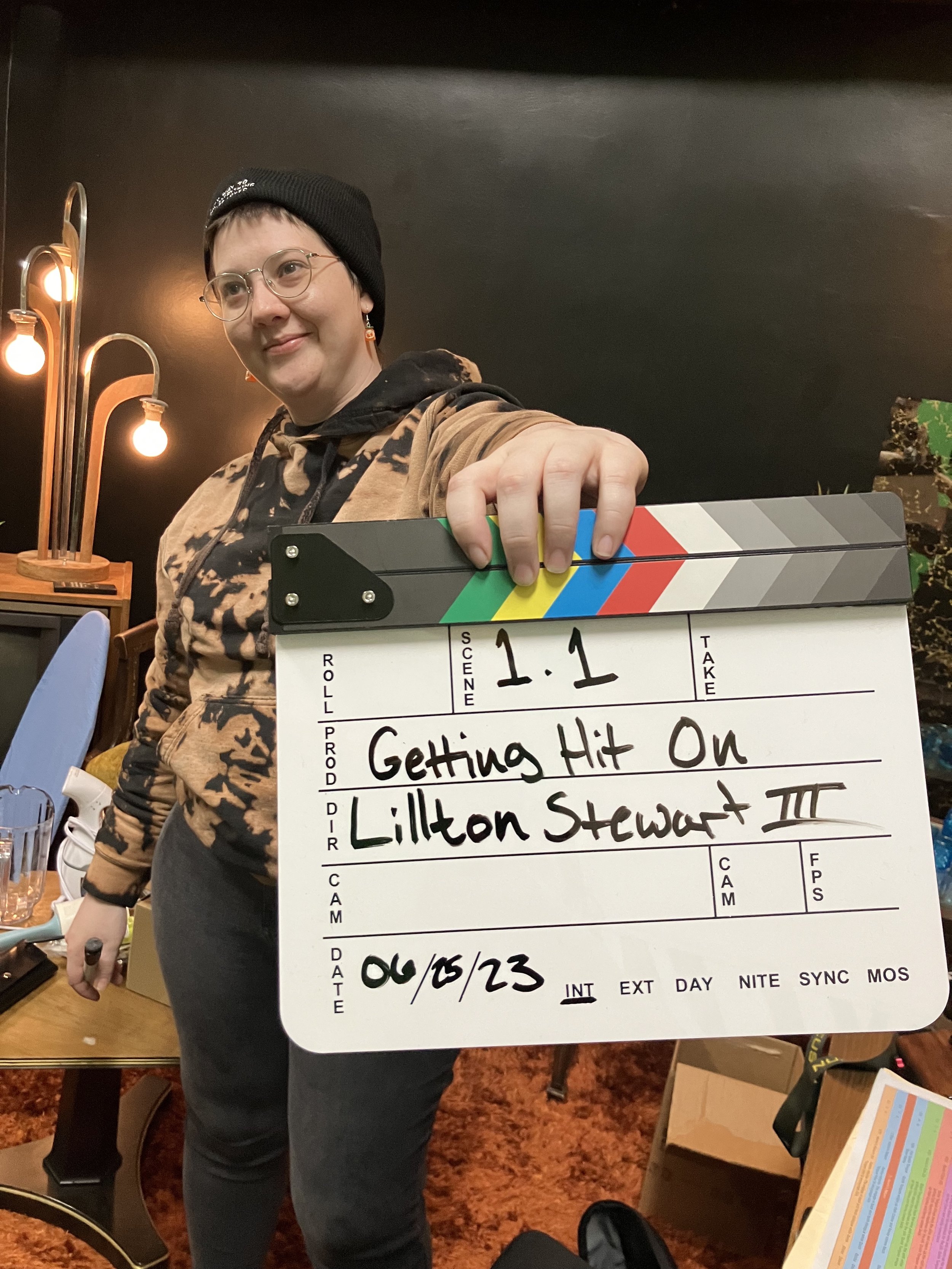Interview with filmmaker Elinor Keyes
Welcome Elinor we are very excited to have you today with us to discuss about your work.
First off, Who is Elinor Keyes, and how did your passion for filmmaking begin?
My interest in filmmaking actually stemmed from my love of performing: I started out as exclusively an actor, and I never expected that I would love working behind the camera as much as I do. My background is a little... unconventional, to say the least. I was accepted to college at the age of 13, and graduated with my bachelor’s degree at 17. During my time in school, my passion for acting really solidified, and I spent four years jumping on every possible opportunity to get onstage or in front of a camera.
Once I left college, I went overseas to Bath, England, and earned my master’s degree in Performing Shakespeare. After graduate school, I moved to Los Angeles to pursue acting, but found that the career path I had decided on at 13 was no longer a perfect fit for me (go figure). I wanted to have a bigger say in creating the kinds of stories that I got to tell, and I loved being the person in charge of getting things done. In looking for ways to expand my scope, I started writing, directing, and producing in addition to acting, and now I practice and enjoy all four jobs in equal measure.
To answer the broader question of “Who is Elinor Keyes”: I’m a loud, bossy nerd with crippling anxiety and a general love of storytelling in all of its forms. (One thing that I learned from acting is how to market myself.)
Can you tell us about your previous work ?
The first and only other project that I’ve ever created from scratch was a seven-episode web series developed for production last year under the SAG-AFTRA New Media Agreement. It’s an extremely goofy mockumentary-style sitcom about the Greek gods entitled “Olympic Proportions”, and it’s available to watch on YouTube. At the time, my hope in making the show was to create as many opportunities for performers as possible with as few resources as possible. I wrote, directed, and produced it myself, and we shot it all on cell phones in people’s apartments. It ended up being such a fulfilling experience to realize that we could just go out there and make stuff, without waiting for anyone’s permission or approval. We wanted to keep building on that momentum, so a bunch of us started meeting regularly to work on creating more projects, and that’s how the Paper Cones Group came to be.
CONVERSATION ABOUT: Getting Hit On
What inspired you to create the unique blend of sentimental romance, spy-themed action, and dark comedy in “Getting Hit On”?
My favorite kinds of stories are the ones that can really succeed in keeping me on my toes. The ones that don’t get too caught up in self-identifying as one specific genre and aren’t afraid of getting a little tonally messy– because, well, life is a little tonally messy, and art imitates life. My goal when I started writing “Getting Hit On” was to create a plot that would make logical sense, but be emotionally confusing: where the audience can follow the events of the film smoothly from Point A to Point B, but then find out that Point B doesn’t feel anything like they expected it to. Thematically, I wanted to draw a structural connection to the unpredictability of romance.
I started drawing on all of the deepest fears and anxieties of someone going on a first date, running the whole gamut from “maybe I’ll say something awkward” to “maybe they’re going to murder me tonight”. That mix of ideas, from the hilarious to the horrific, resulted in the final product: a twisted, unclassifiable slice of weirdness that throws dirty jokes in the middle of dramatic monologues and uses physical comedy as a distraction tactic for a hit job.
How did you approach balancing the various genres in the film, ensuring that both the romance and action thriller elements were effectively portrayed?
In essence, it all came down to the characters. In dealing with a story containing as many wacky elements and face-palm-worthy jokes as this one, the temptation can be to go directly for playing the comedy on the surface and ignore the deeper intentions underneath. To ensure that all of the themes we were playing with got the gravity that they deserved, it was important to make sure that didn’t happen: otherwise, the balance of genres wouldn’t have worked. Luckily, I couldn’t have chosen a better director for the task– my friend, collaborator, and mentor Lilton Stewart III. From our first conversation about the script, it was clear that Lilton understood exactly what I was going for in writing it the way that I did, and he knew precisely how to approach the material in order to get the most out of every single moment.
As I also served as the producer of the film, I had the privilege of working alongside Lilton throughout the entire process, and watching the way that he adapted the story on the page to living, breathing people. I really appreciated the way that his directing method started from the inside and worked outward, collaborating with the actors to identify the emotional cores of their characters first and then layering the comedic relief on top.
It’s what makes the genre-blending of the film so compelling: throughout all the ridiculous, dangerous, and out-of-the-blue twists, the overarching depth of the characters is what ties it all together.
Were there specific cinematic techniques or visual cues you employed to highlight the contrast between the romance and thriller aspects of the film?
One thing that this production really showed me is that, onscreen, a single glance between actors is worth everything. Because there are so many “big reveal” moments scattered throughout the script, we had a lot of leeway in playing with foreshadowing, and it was so fun to go through and pick out the minutiae that we wanted to highlight on camera to give the audience little hints. For example, there’s one moment towards the end of the film where Kenny leaves the room and almost runs into Quick Tongue as he enters from the other direction– in any other context, it might mean nothing, but it becomes more significant once you know what will happen after Kenny leaves.
My absolute dream is that someone will finish the film and think, “I want to go back and rewatch that to see if I missed any clues in the beginning for what was going to happen in the end”.
The color red has also always been really prominent in my mind when thinking about this piece, in that it has connotations with both love and danger, so we played a lot with that in the lighting and color grading of the film.
The chemistry between the characters is crucial in a film like this. How did you approach the casting process, especially in selecting actors who could convincingly portray the contrasting elements of romance and thriller?
I can’t overstate how much I love this cast. Since The Paper Cones is a small group and we already knew each other well both professionally and personally, it wasn’t a difficult process to decide who was going to be playing which character– honestly, I sort of had this trio in mind from the beginning. The best thing that I’ve been learning from working with such a tight-knit company as the Paper Cones is how immensely satisfying it is to be part of a group of artists who are all inspired to create things for each other. While I didn’t deliberately write the script with any specific actors in mind, I did think about people that I might hypothetically like to eventually cast while the story was forming, which meant that when it was done we were able to find performers who could step into those roles with ease. Between Patrick Brady’s lovably-naïve-and-heartbreakingly-earnest portrayal of Dirk, Nicholas Adams’ Quick Tongue taking it all way too seriously (in the most hilarious way), and Matt Christian’s jaw-dropping code switching in the role of Kenny, it was clear from the beginning that these three actors were perfect. From there, the chemistry just soared.
Given the unique premise of the film, were there any logistical or production challenges that stood out? How did you and your team overcome these challenges?
Our biggest obstacle in this production was time. With this being our first production as a small company, we only had the funds to reserve the location for one day, which meant that we had to rush quite a bit once we got to set. One of our cast members was also going to be moving across the country literally the day after the shoot, which made the time crunch even more visceral. To cut down on the amount of time spent on set, we did a ton of rehearsing and planning beforehand so that everyone knew what they were doing by the time that the cameras were rolling. The cast and crew stepped it up big-time on that one: everyone was so on top of their tasks and willing to put in the work. It was hectic, but also so invigorating to see our group rise to the challenge.
Is there a specific emotion or reaction you hope the audience experiences during and after watching the film?
I hope there are a lot of them. I hope people feel giddy, and unsettled, and moved in ways that they might not be able to define. I hope that they laugh at the sex jokes and feel as inexplicably charmed by them as Dirk does. I hope that they exit the theater or turn their screen off thinking, “what... WAS that?”. I hope people make memes using screencaps from the film. I hope people debate over whether, excepting the murder, they would rather date Kenny or Dirk. I hope people feel a strange mix of hopelessness and hopefulness, cynical in the knowledge that they can’t trust anyone but uplifted by the fact that we still try anyway. However, that’s a lot to expect from the audience of a 17-minute film, so I’ll say that if we can get one good, dramatic gasp out of someone, I’ll be happy.
Do you have any plans for your next project?
I’ve written a few new short scripts since finishing Getting Hit On, one of which is currently in the very early stages of pre-production. I’m also in the process of writing my first feature-length screenplay. I had the privilege of producing my incredible friend Rachel Keaton’s short film Both Sides Now, which is in post and will be coming out soon. I’ve started working as an associate producer on a forthcoming feature, Oswald: Down the Rabbit Hole, written and directed by the incomparable Lilton Stewart III. On a group level, there are big things coming for the Paper Cones as well. Our next main production will be short film “Dad n’ Son”, written and directed by JP Siruno– it’s a puppet show with a delightfully absurd script that’s even higher up on the goofiness scale than “Getting Hit On”, and we’re so excited to be working on it. I’m also producing our first stage-to-screen (or, stage-ON-screen?) production of the play Gruesome Playground Injuries, starring brilliant actors Matt Christian (who played Kenny), and Hannah Cohen-Lawlor. Keep an eye out for more news about the Paper Cones Group: I suspect that this is far from the last you’ll be hearing of us.
That was the interview with our beloved creator Elinor Keyes. Our community is rising everyday, new talented filmakers and screenwriters get onboard. Be sure to check the rest of our interviews and why not schedule one for yourself to promote your work.
To publish an interview simply submit on the INTERVIEW OF YOUR FILM category on our Filmfreeway page.








